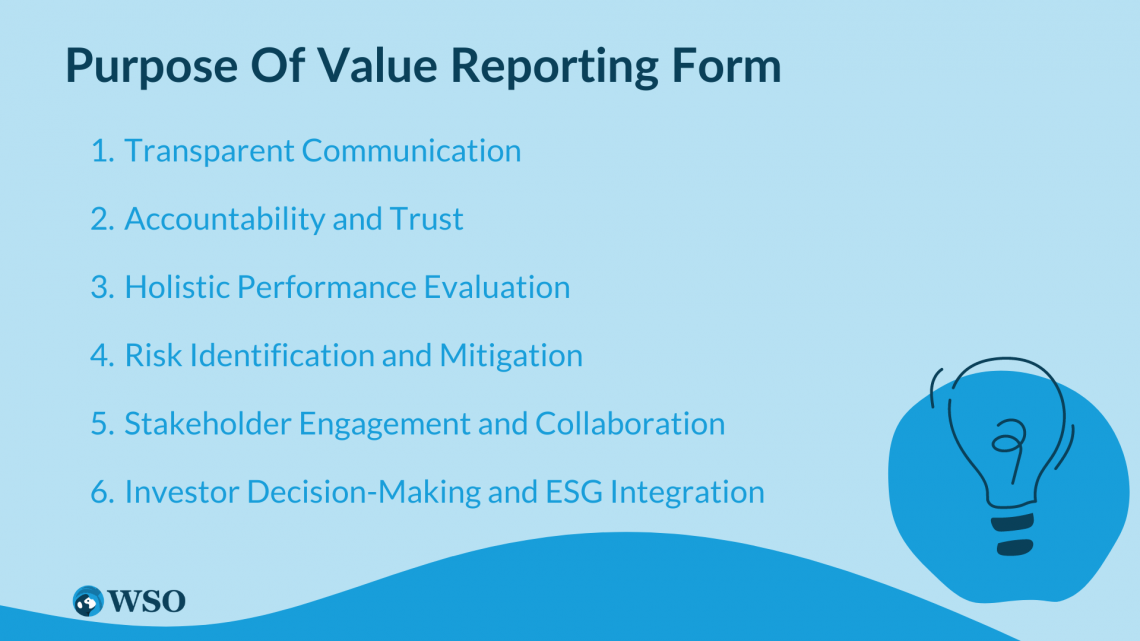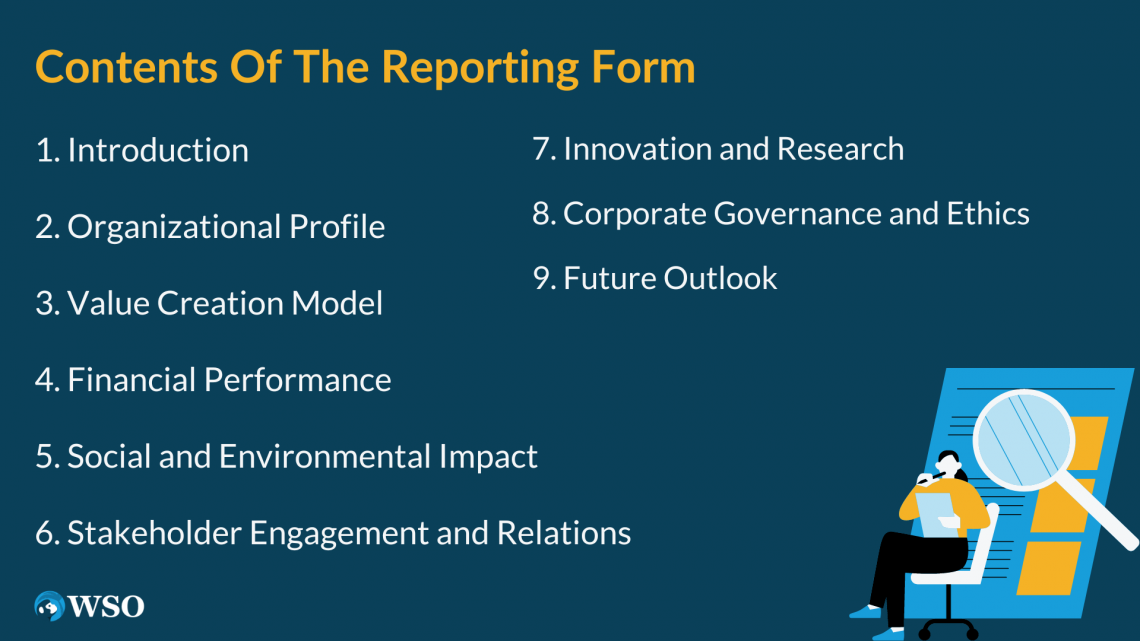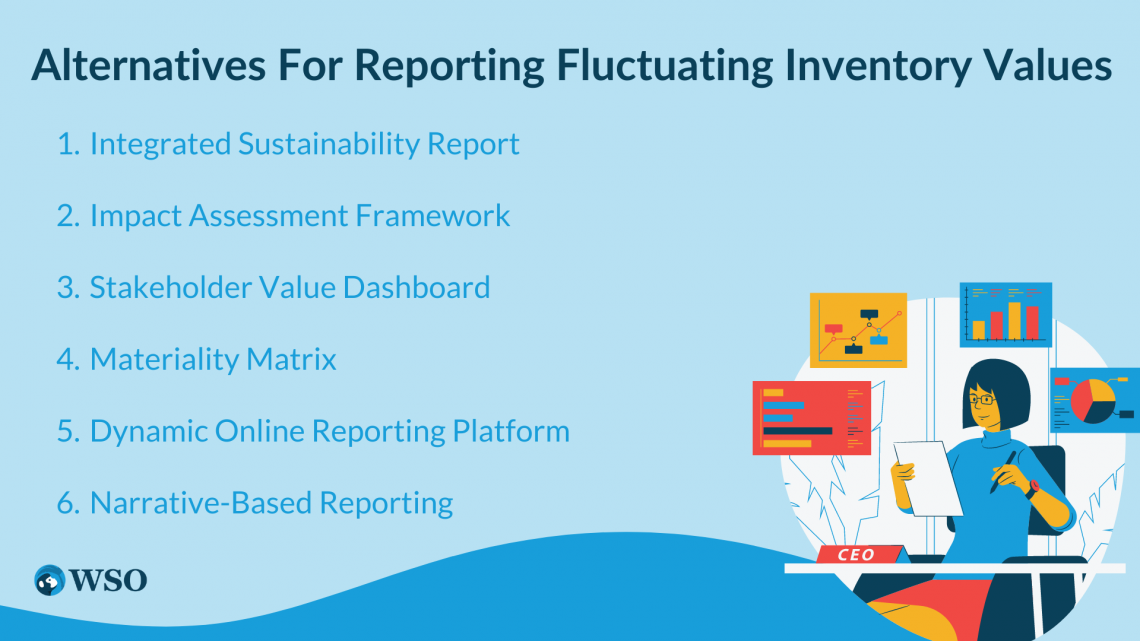Value Reporting Form
The value reporting form serves as a vital tool for businesses that possess irregular inventories, which are subject to variations in quantity, quality, and specific items held.
What is a Value Reporting Form?
The value reporting form serves as a vital tool for businesses that possess irregular inventories, which are subject to variations in quantity, quality, and specific items held.

By completing this form, businesses can furnish their insurance companies with crucial information, allowing them to determine appropriate coverage amounts that align with the current value of the inventory.
It is necessary for businesses with constantly shifting inventories to submit value reporting forms throughout the year.
These forms provide a means for periodic reporting of the changing values associated with the fluctuating stock to the insurance provider. This ensures that the coverage remains in line with the actual value of the inventory, minimizing the risks of being either overinsured or underinsured.
Value reporting forms are commonly used by businesses to provide crucial information to insurance companies about the value of their inventory.

Insurance companies often refer to the value reporting form as a stock reporting form, as its purpose revolves around effectively monitoring the coverage level of commercial enterprises with inventory values that undergo continuous adjustments over time.
Given the dynamic nature of such inventories, characterized by alterations in the quantity and quality of items held, the value reporting form becomes indispensable in maintaining accurate and up-to-date insurance coverage.
When completing the form, businesses must provide periodic updates on the shifting values of their inventory.

Timely and accurate reporting is crucial to ensure that the insurer can adjust the insurance coverage accordingly. By promptly submitting the form with precise information, businesses can ensure that their insurance coverage accurately reflects the current value of their inventory.
The value reporting form acts as a communication channel between the insured business and the insurance company, facilitating a transparent and efficient process for adjusting coverage levels based on the changing inventory values.
By adhering to the requirements of the form and consistently providing accurate updates, businesses can establish a mutually beneficial relationship with their insurance providers, securing appropriate coverage that aligns with their ever-changing inventory.
Key Takeaways
- Value reporting forms ensure accurate insurance coverage by capturing the changing values of irregular inventories.
- Comprehending the form is crucial for accurate reporting and optimal insurance protection.
- Value reporting forms serve as a transparent communication channel between businesses and insurers.
Comprehension Of Value Reporting Form
Understanding the value reporting form is crucial for businesses aiming to navigate the complexities of insurance coverage related to their fluctuating inventory values.

It is essential to comprehend this form's purpose, requirements, and implications to ensure accurate reporting and maintain optimal insurance protection.
At its core, comprehension of the value reporting form entails grasping its significance as a tool for businesses with irregular inventories.
These inventories, characterized by variations in quantity, quality, and specific items held, necessitate periodic reporting to insurance companies.
By completing the form, businesses provide vital information that enables insurers to adjust coverage amounts, aligning them with the current value of the inventory.
To fully comprehend the form, businesses must recognize its role in mitigating risks associated with being overinsured or underinsured.
Through accurate and timely reporting, businesses can avoid potential gaps in coverage or unnecessary expenses. This understanding underscores the importance of diligently completing the form, as it serves as how businesses communicate changes in inventory values to their insurance provider.
Note
Businesses should be aware that insurance companies may use different terms for the value reporting form, such as a stock reporting form.
However, the fundamental purpose remains the same: monitoring coverage levels for commercial enterprises with inventory values subject to fluctuations over time.
Comprehending this term variation contributes to a comprehensive understanding of the insurance reporting process and involves recognizing the necessity of periodic updates.
Businesses must grasp the significance of providing accurate and timely information on shifting inventory values to their insurance company.
This comprehension ensures that coverage adjustments align with the actual value of the inventory, reflecting the ever-changing nature of the business's stock. A strong grasp of the stock reporting form enables businesses to navigate the reporting process effectively.

By comprehending the requirements and implications of the form, businesses can establish a transparent and efficient line of communication with their insurance provider.
This comprehension facilitates the
- Maintenance of accurate coverage levels
- Minimizing potential discrepancies
- Ensuring that insurance protection remains aligned with the current value of the inventory
Comprehension of the stock reporting form is essential for businesses seeking to navigate insurance coverage effectively.
By understanding its purpose, requirements, and implications, businesses can ensure accurate reporting, mitigate risks associated with coverage gaps, and maintain optimal protection for their ever-shifting inventories.
Through comprehensive comprehension of the form, businesses establish a strong foundation for effective communication with their insurance provider and safeguard their interests in an evolving business landscape.
Purpose Of Value Reporting Form
Value reporting forms have emerged as indispensable tools in business, enabling organizations to communicate the multifaceted value they create.

These forms facilitate transparent and comprehensive reporting across financial, social, and environmental dimensions, fostering accountability and sustainable practices.
This analytical exploration will delve into the purpose and significance of stock reporting forms, presenting key pointers that highlight their importance.
Organizations can promote transparency, build trust, and drive holistic value creation by understanding the objectives and benefits associated with value reporting.
Purpose of Value Reporting Forms includes:
1. Transparent Communication
They aim to provide transparent and comprehensive information about an organization's economic, social, and environmental impacts.
Note
Transparent Communication facilitates effective communication with stakeholders, allowing them to make informed decisions, understand the organization's value creation, and evaluate its alignment with its values and objectives.
2. Accountability and Trust
They promote accountability by demonstrating an organization's commitment to responsible practices.
They help build trust among investors, consumers, employees, and communities as stakeholders gain visibility into the organization's impact on various stakeholders and the environment.
3. Holistic Performance Evaluation
They enable organizations to assess their performance beyond financial metrics.
Note
Considering social and environmental aspects, these forms provide a broader perspective on value creation. They help organizations identify areas for improvement, drive innovation, and align their strategies with sustainable development goals.
4. Risk Identification and Mitigation
They assist organizations in identifying and mitigating risks associated with their operations.
By analyzing data captured in these reports, organizations can identify potential risks arising from environmental factors, supply chain vulnerabilities, regulatory changes, or social issues. This proactive approach allows organizations to develop strategies to manage risks effectively.
5. Stakeholder Engagement and Collaboration
They facilitate stakeholder engagement by providing a platform for dialogue, collaboration, and partnership-building. Organizations can incorporate stakeholder feedback, address concerns, and work towards shared goals.
This engagement improves decision-making, reputation management, and shared value creation.
6. Investor Decision-Making and ESG Integration
They play a vital role in investor decision-making processes, as investors increasingly consider non-financial factors alongside financial indicators.
Note
Timely and accurate reporting through value reporting forms helps businesses establish a transparent and efficient communication channel with their insurance providers.
These bureaucracies offer crucial data for environmental, social, and governance (ESG) evaluation, enabling traders to evaluate the lengthy-term sustainability and resilience of an agency's enterprise model.
By embracing these forms, organizations can demonstrate their commitment to sustainable practices, engage stakeholders effectively, and drive long-term value creation.
These forms function as catalysts for innovation, change management, and strategic selection-making, fostering a greater sustainable and accountable enterprise landscape.
Contents Of The Reporting Form
Value reporting forms have become instrumental in showcasing an organization's commitment to sustainability, responsible practices, and holistic value creation.

These comprehensive documents offer a transparent account of an organization's economic, social, and environmental impacts.
From executive summaries to future goals, each form section plays a vital role in conveying the organization's journey toward sustainability, fostering stakeholder trust, and driving positive change. Let us delve into the key components of these informative and impactful documents.
1. Introduction
The value reporting form begins with an introductory section that provides a concise overview of the report's purpose, scope, and audience. It sets the context for the information presented and highlights the significance of assessing and communicating value.
2. Organizational Profile
This section offers a comprehensive overview of the organization being reported on. It includes details such as the organization's mission, vision, key stakeholders, governance structure, and organizational structure.
Note
Organizational Profile helps readers understand the context within which value is being generated.
3. Value Creation Model
The value reporting form outlines the organization's value creation model. It explains the key drivers, strategies, and activities contributing to value generation. This section may include information on core products or services, competitive advantages, and unique value propositions.
The financial performance section is a crucial aspect of the value reporting form. It provides particular economic facts, consisting of sales, income margins, coins waft, and going back on funding.
Note
It may also highlight key financial ratios, such as liquidity and solvency ratios, to assess the organization's financial health.
5. Social and Environmental Impact
This section focuses on the organization's social and environmental impact. It assesses its operations' positive and negative effects on stakeholders, communities, and the environment.
Data on social initiatives, community involvement, environmental footprint, and sustainability efforts are often included to demonstrate the organization's commitment to responsible practices.
6. Stakeholder Engagement and Relations
The form addresses stakeholder engagement and relations. It describes how the organization identifies and engages with its key stakeholders, including customers, employees, suppliers, and local communities.
This section may highlight communication channels, feedback mechanisms, and initiatives to foster positive stakeholder relationships.
7. Innovation and Research
The organization's innovation and research efforts are important to value reporting. This section showcases the organization's commitment to innovation, technological advancements, and research and development activities.
Note
It may highlight new product development, patents, research institution collaborations, and cutting-edge technology investments.
8. Corporate Governance and Ethics
The form includes a section on corporate governance and ethics. It outlines the organization's governance structure, board composition, risk management practices, and adherence to ethical standards.
This section may also address issues such as transparency, accountability, diversity and inclusion, and the organization's approach to corporate social responsibility.
9. Future Outlook
The form concludes with a forward-looking section highlighting the organization's plans, strategies, and targets. It provides insights into how the organization plans to create value, address challenges, and capitalize on emerging opportunities.
Note
This section may discuss future investments, expansion plans, and anticipated impacts on stakeholders and the environment. A stock reporting form encompasses various contents that collectively communicate the organization's value creation efforts.
It covers aspects such as organizational profile, value creation model, financial performance, social and environmental impact, stakeholder engagement, innovation, corporate governance, and future outlook.
By presenting this comprehensive information, the form enables stakeholders to understand the organization's value creation journey and commitment to sustainable practices.
Alternatives For Reporting Fluctuating Inventory Values
Let us now see a range of alternative approaches to the traditional value reporting form. These alternatives depart from the conventional format, offering innovative ways to showcase the broader dimensions of value and impact.

By exploring alternative approaches, we can witness a shift towards greater transparency, stakeholder engagement, and a deeper understanding of the organization's societal contributions.
Each alternative presents a unique perspective on value reporting in the modern era. These are
1. Integrated Sustainability Report
An integrated sustainability report goes beyond financial performance to provide a comprehensive overview of an organization's value creation and sustainability efforts.
It combines financial, social, environmental, and governance aspects into a cohesive document. The report showcases how the organization generates value while considering its impact on various stakeholders and the environment.
It includes key performance indicators, targets, initiatives, and progress updates related to sustainability goals.
Note
By integrating different dimensions of value creation, this report enables stakeholders to understand the organization's holistic approach to sustainable business practices.
2. Impact Assessment Framework
An impact assessment framework evaluates the social, environmental, and economic influences of a business enterprise's activities. This alternative approach goes beyond solely reporting financial metrics and analyzes outcomes and benefits for stakeholders.
It employs life cycle assessment, social return on investment, or environmental impact assessment to measure and quantify the organization's positive and negative contributions.
Note
The framework helps identify areas of improvement, prioritize resource allocation, and enhance the organization's overall impact on society and the environment.
3. Stakeholder Value Dashboard
A stakeholder value dashboard visually illustrates an employer's price advent for specific stakeholder corporations.
It presents key indicators, metrics, and performance measures in a user-friendly format, allowing stakeholders to grasp the organization's impact and value contributions quickly.
The dashboard may include stakeholder satisfaction ratings, social and environmental impact data, diversity and inclusion statistics, and progress toward sustainability goals.
Note
By offering a concise and accessible overview, this alternative reporting tool facilitates stakeholder engagement and transparency.
4. Materiality Matrix
A materiality matrix is a graphical representation that identifies and prioritizes an organization's most material sustainability issues. It helps focus reporting efforts on the most relevant and significant topics to the organization and its stakeholders.
The matrix categorizes issues based on their potential impact on the organization's value creation and their importance to stakeholders.
This alternative approach ensures that reporting aligns with stakeholder expectations and concentrates on areas where the organization can make a significant difference, thus enhancing the credibility and relevance of the reported information.
5. Dynamic Online Reporting Platform
A dynamic online reporting platform offers an interactive and engaging way to present an organization's value-creation efforts. It goes beyond the limitations of a static value reporting form by utilizing multimedia elements such as videos, infographics, interactive charts, and storytelling features.
Note
The platform enables stakeholders to explore the organization's initiatives, progress, and impact in an immersive and accessible manner. It facilitates meaningful stakeholder engagement, encourages dialogue, and allows for real-time updates, ensuring the information remains relevant and up-to-date.
6. Narrative-Based Reporting
Narrative-based reporting takes a storytelling approach to convey an organization's value-creation journey.
Instead of relying solely on quantitative data, this alternative approach focuses on sharing real-life stories, case studies, and examples demonstrating the organization's positive impact on stakeholders and society.
Note
The report highlights the human dimension of value creation through narratives, showcasing how the organization's actions have made a difference in people's lives.
This approach creates a compelling and relatable narrative that resonates with stakeholders and provides a deeper understanding of the organization's purpose and societal contributions.
These alternative approaches to value reporting offer organizations various options to communicate their value creation efforts, sustainability performance, and stakeholder impact.
Integrated sustainability reports, impact assessment frameworks, stakeholder value dashboards, materiality matrices, and narrative-based reporting enhance transparency, engagement, and the organization's credibility as a responsible corporate citizen.










or Want to Sign up with your social account?